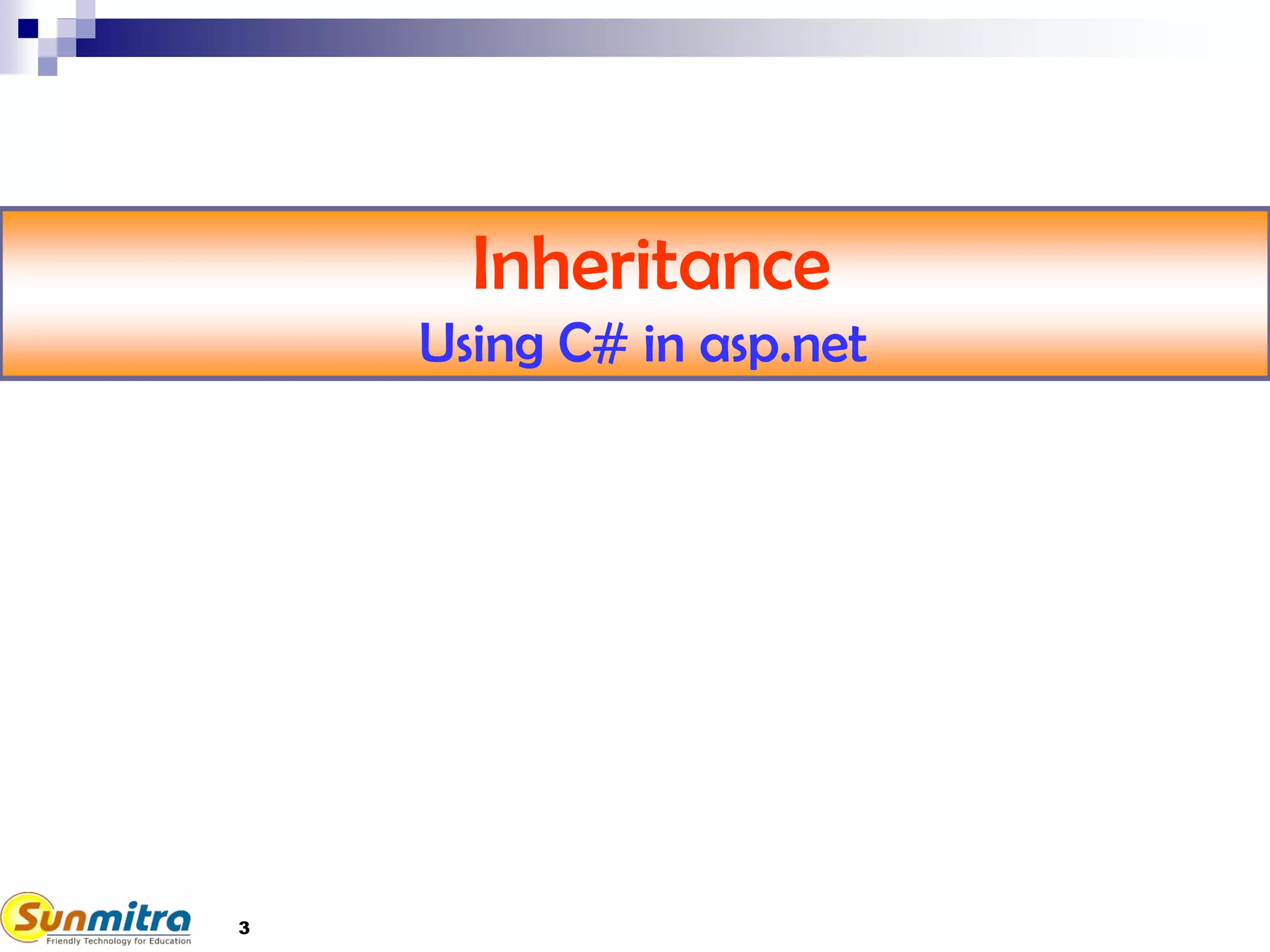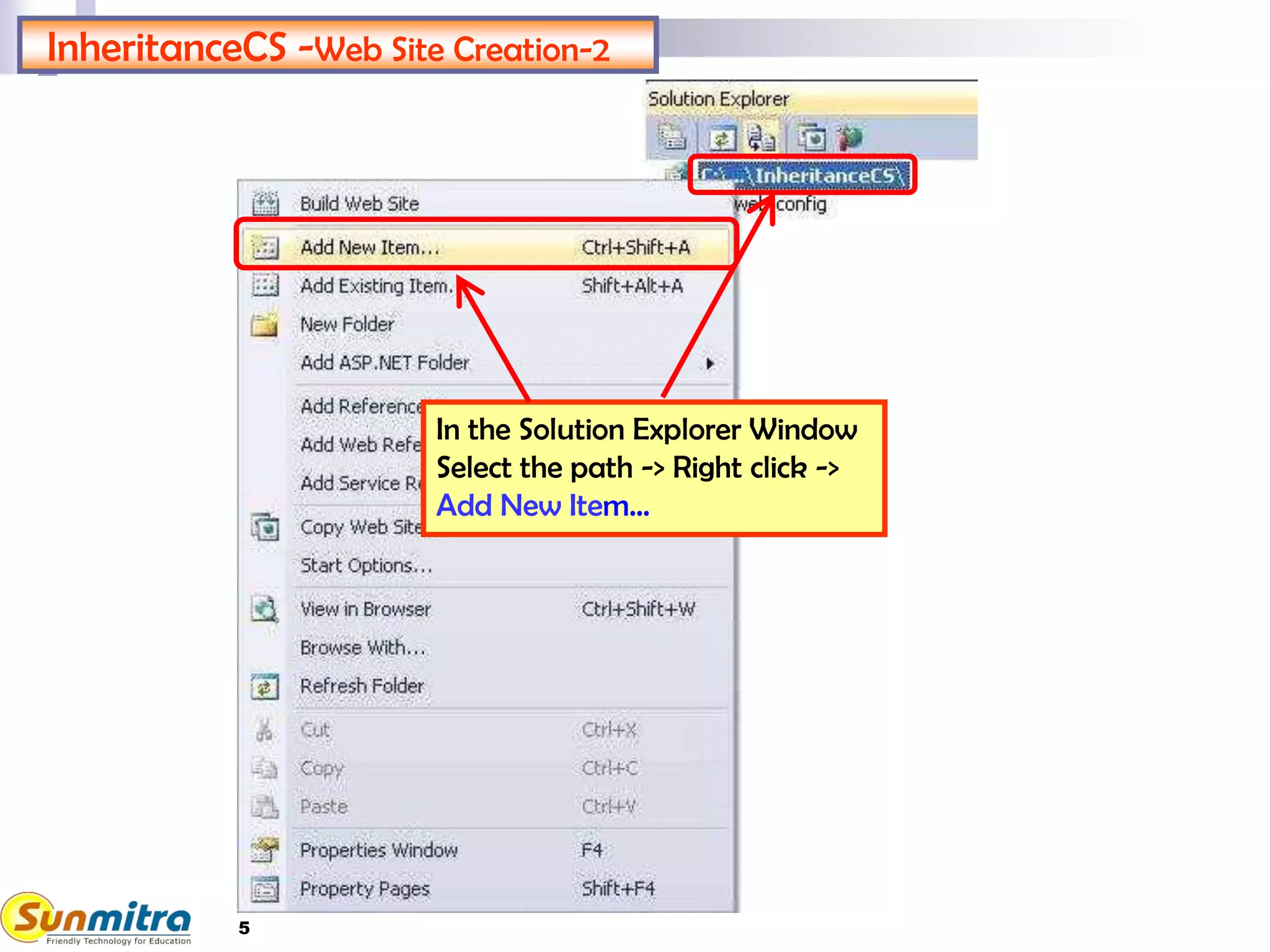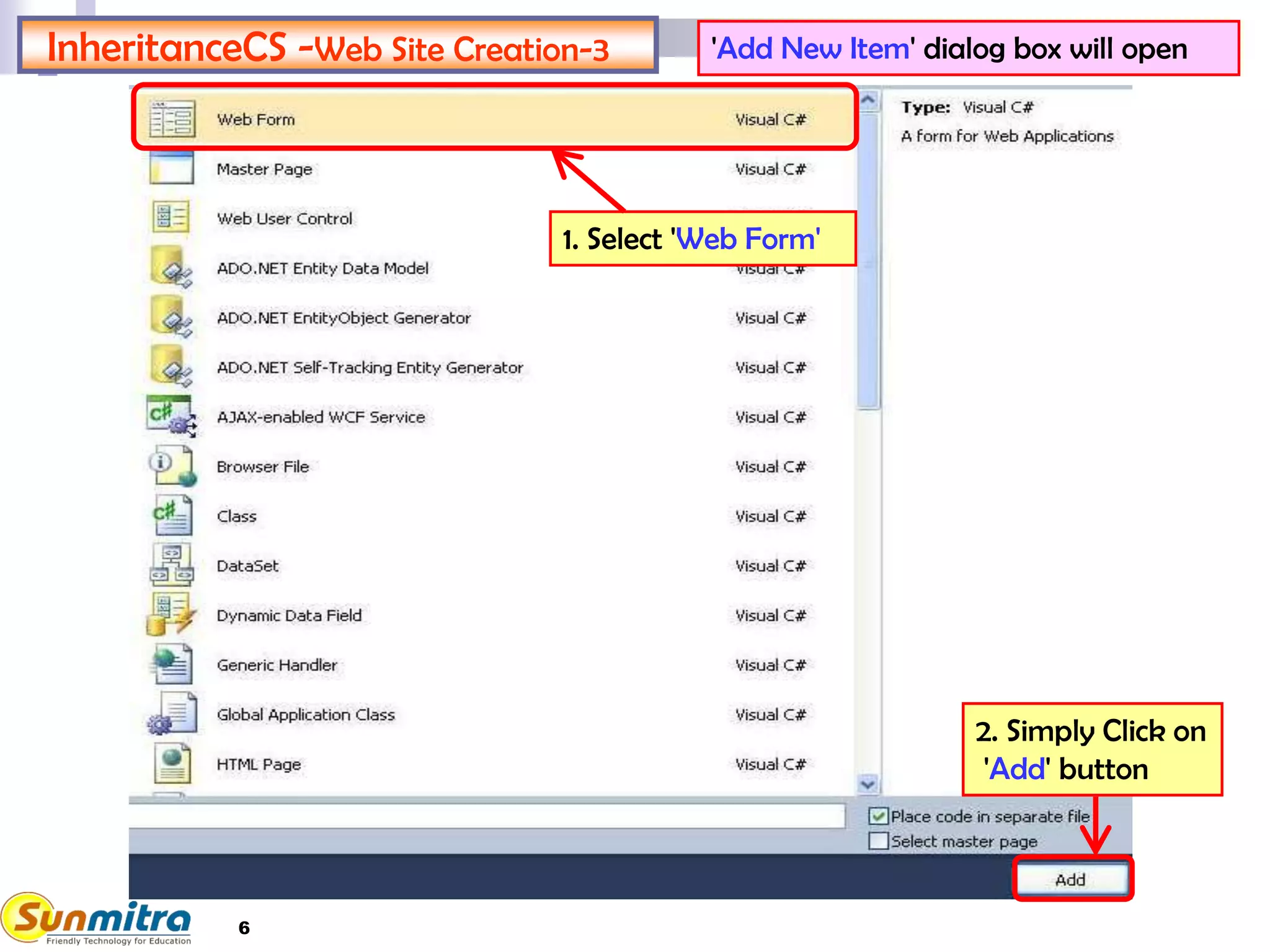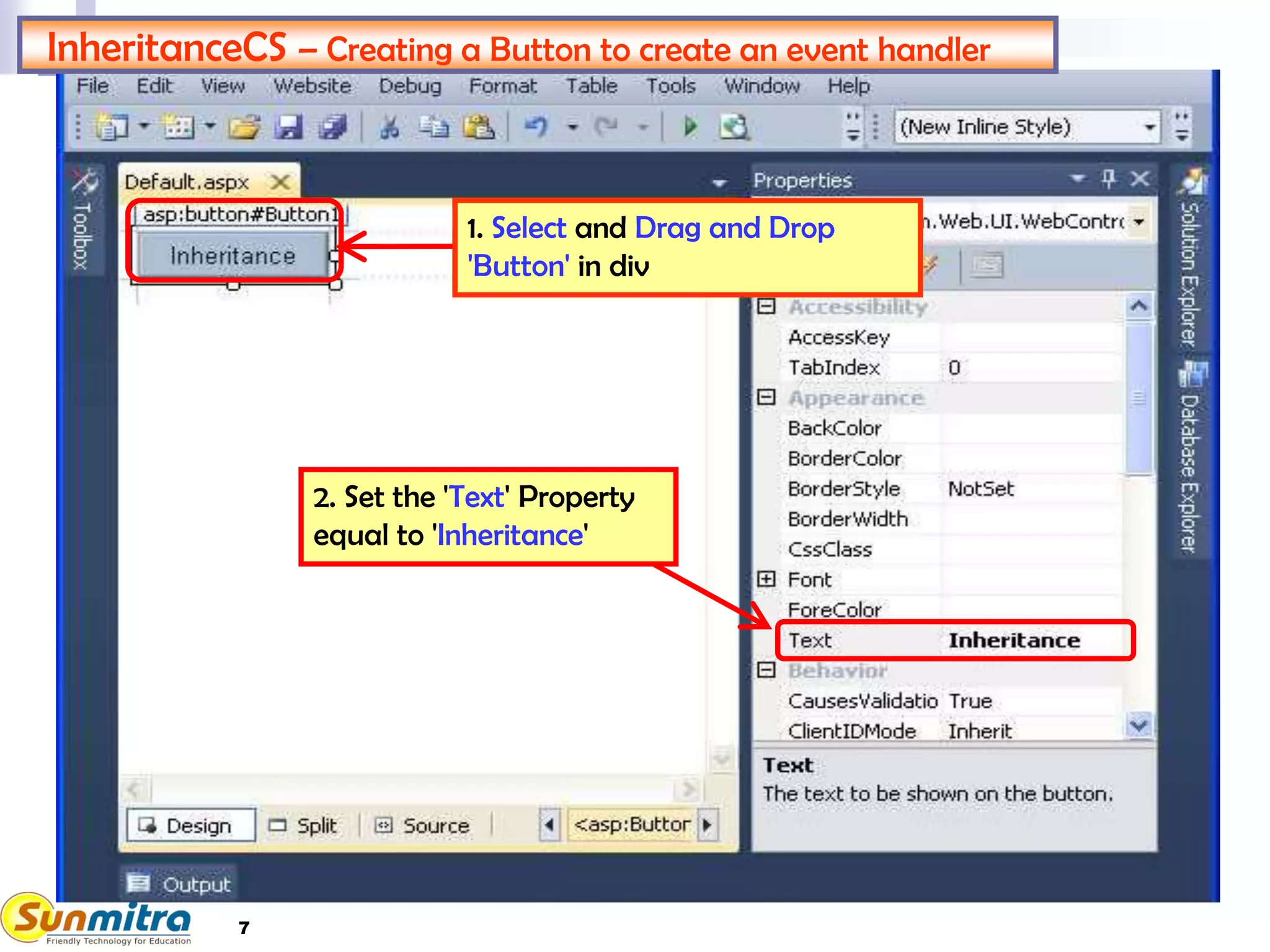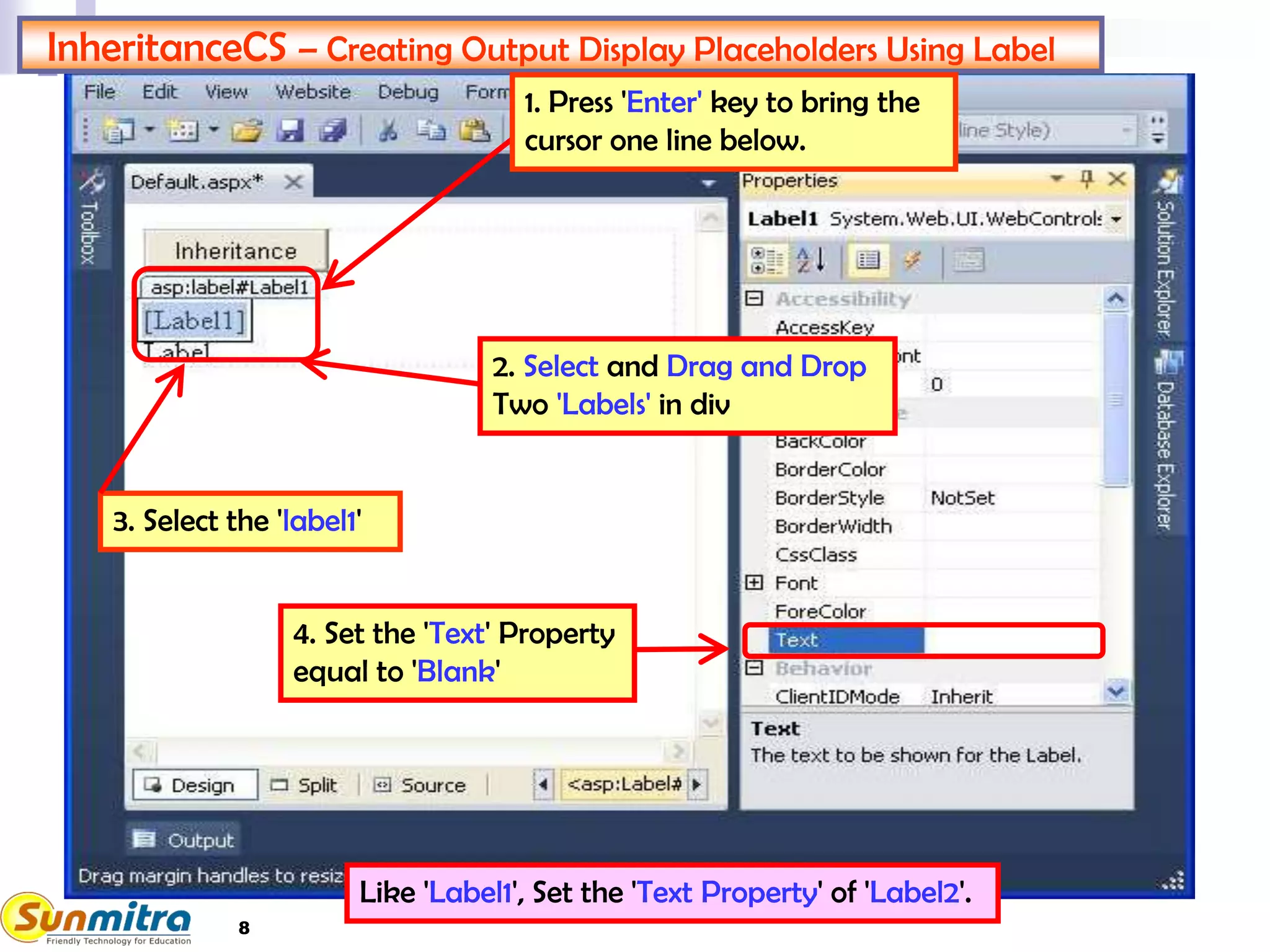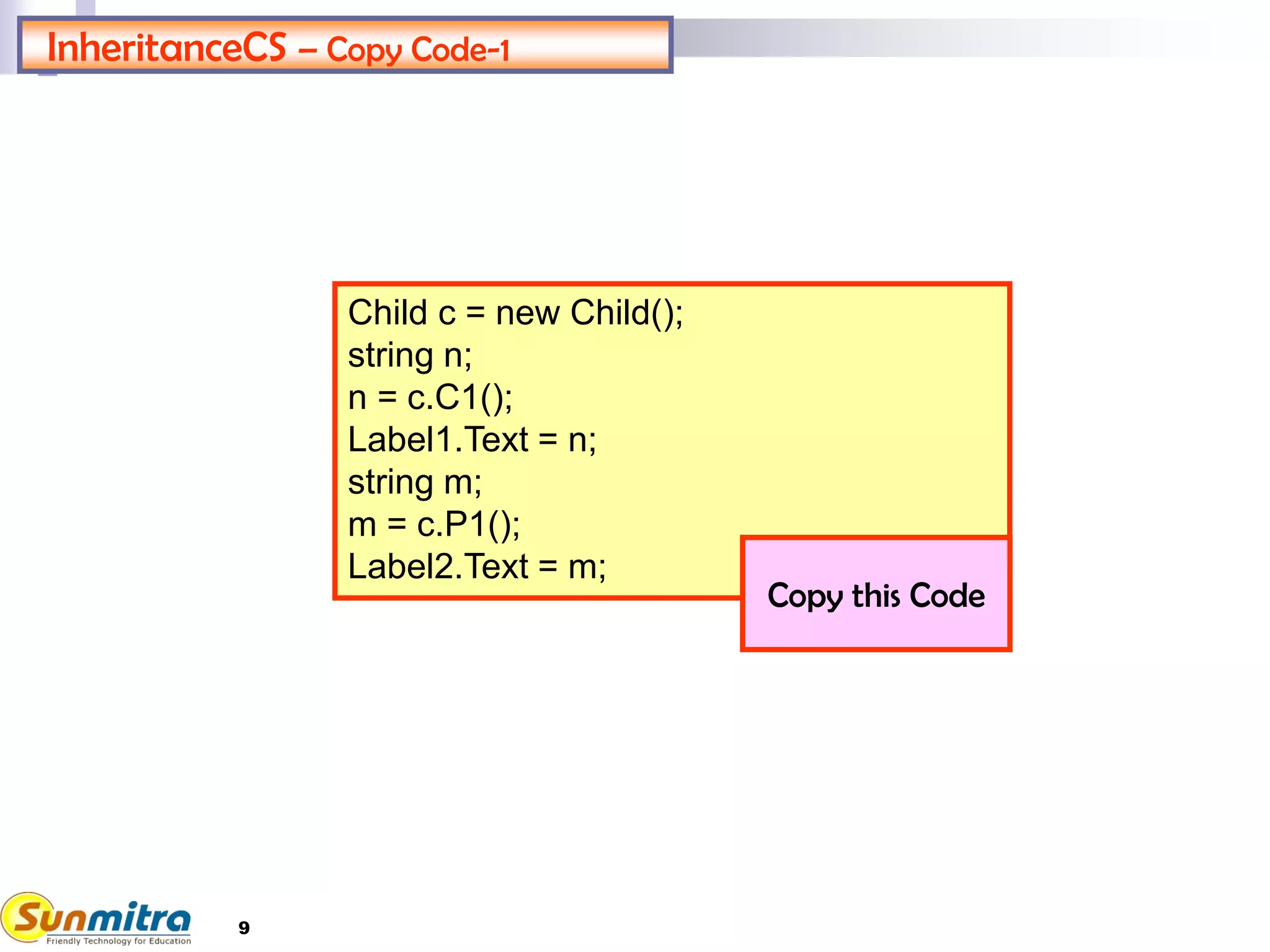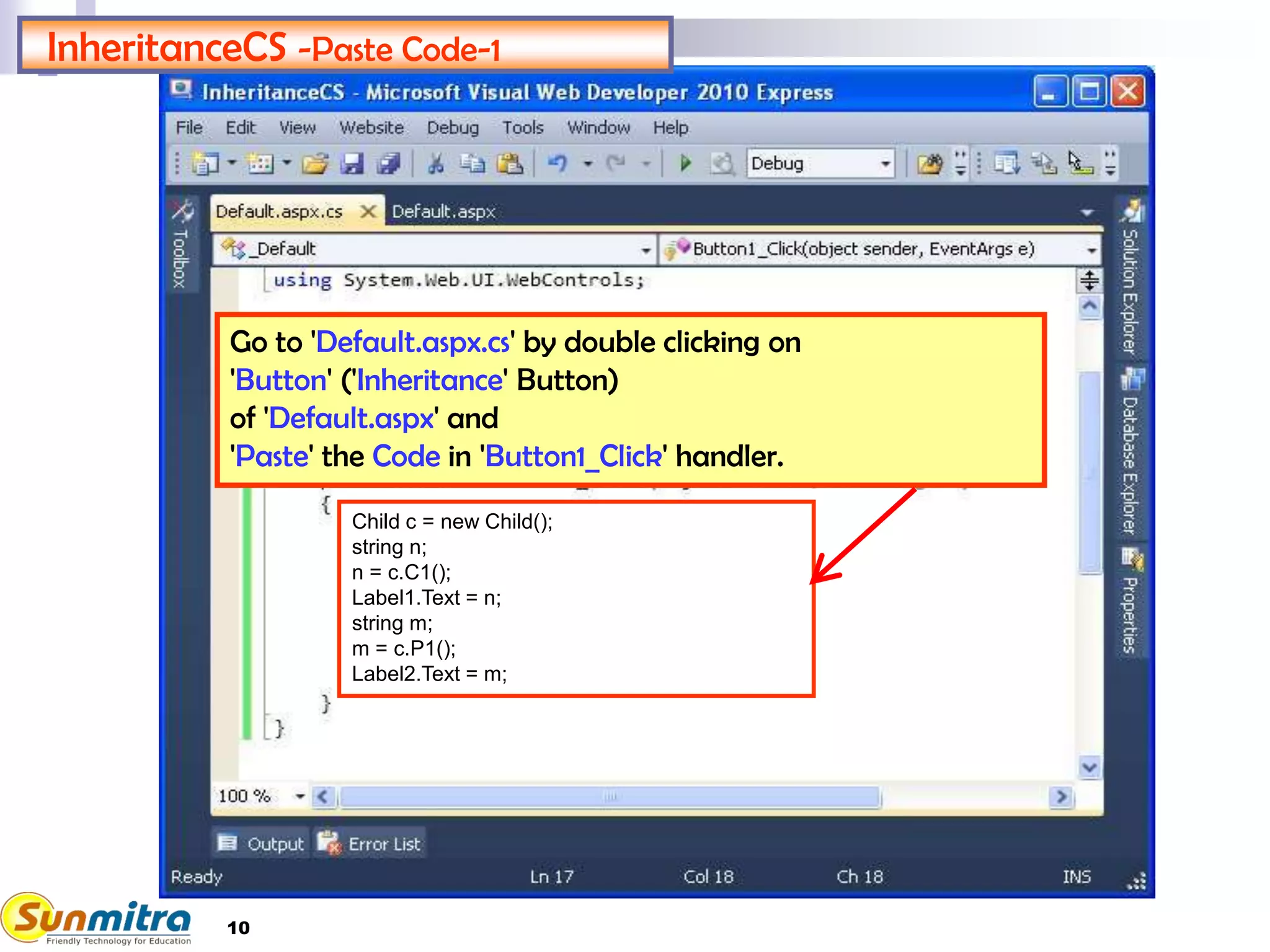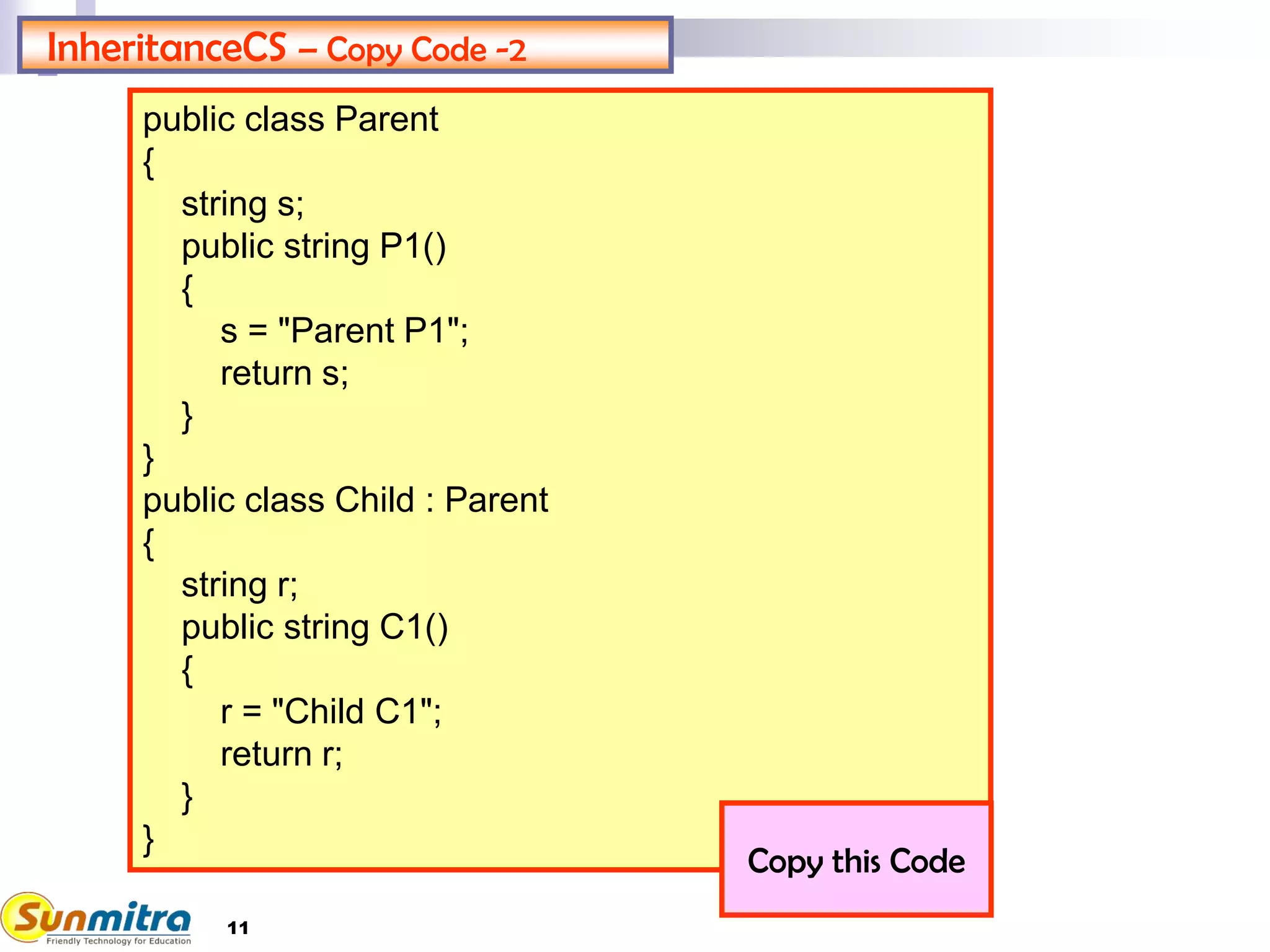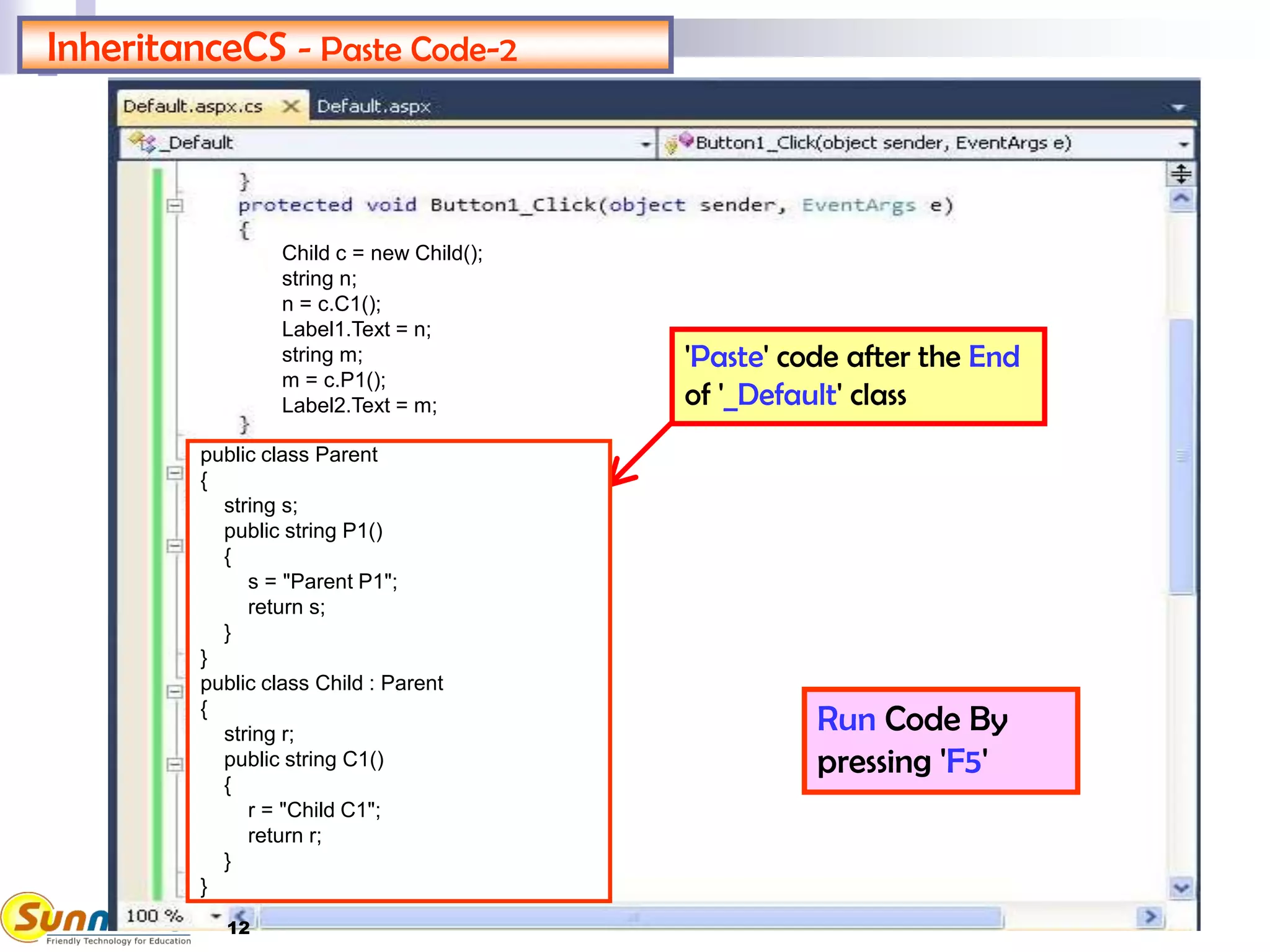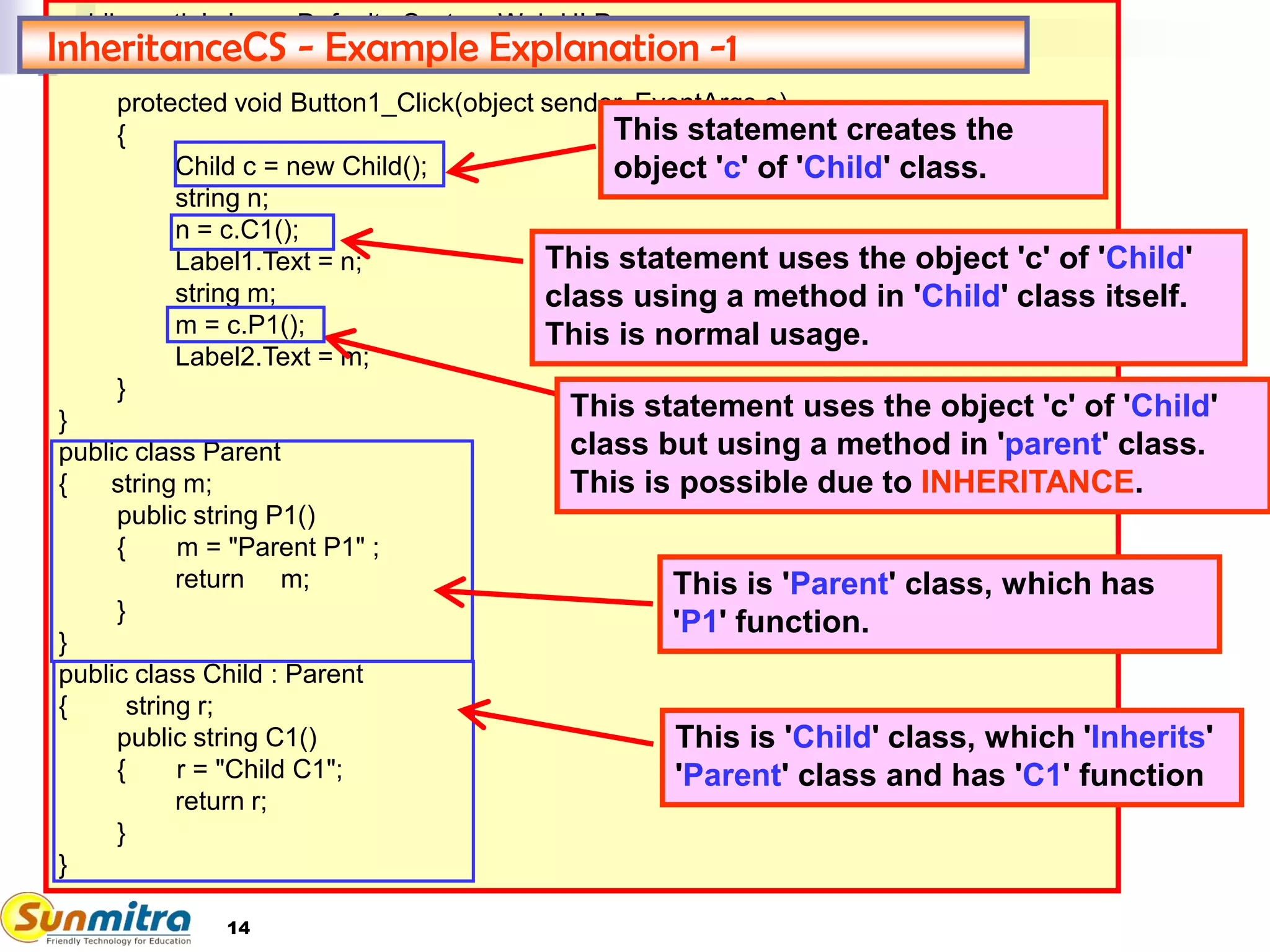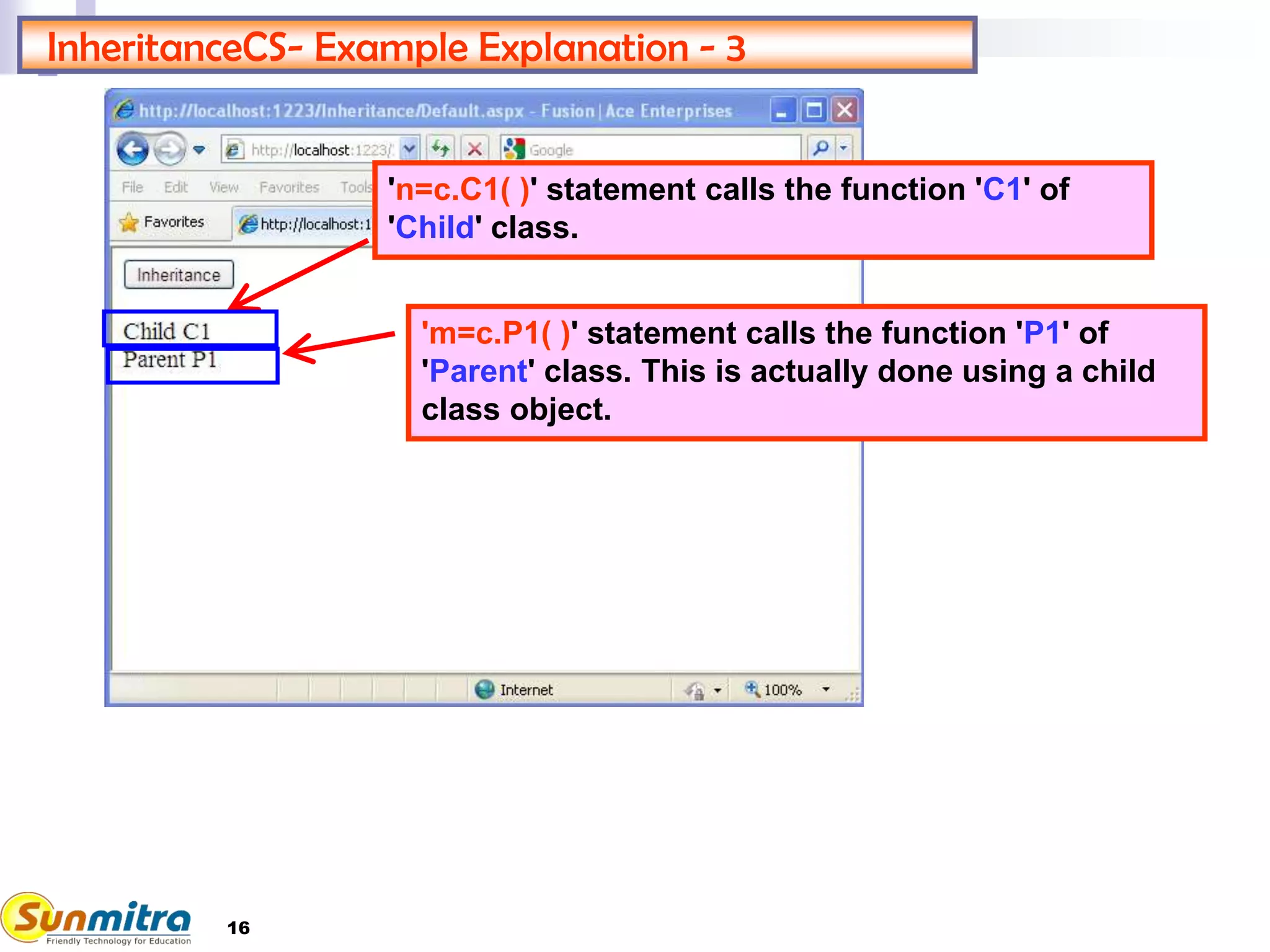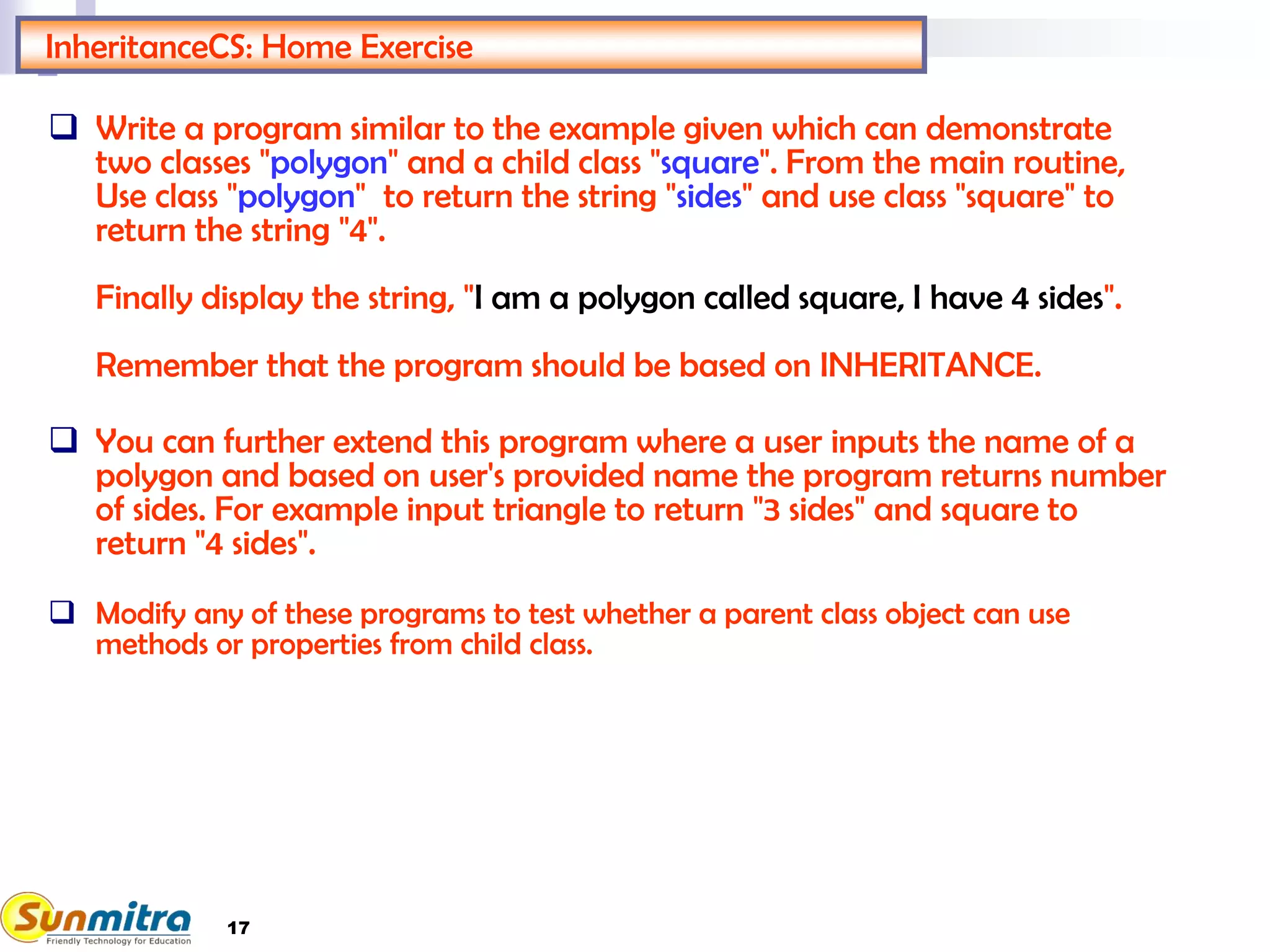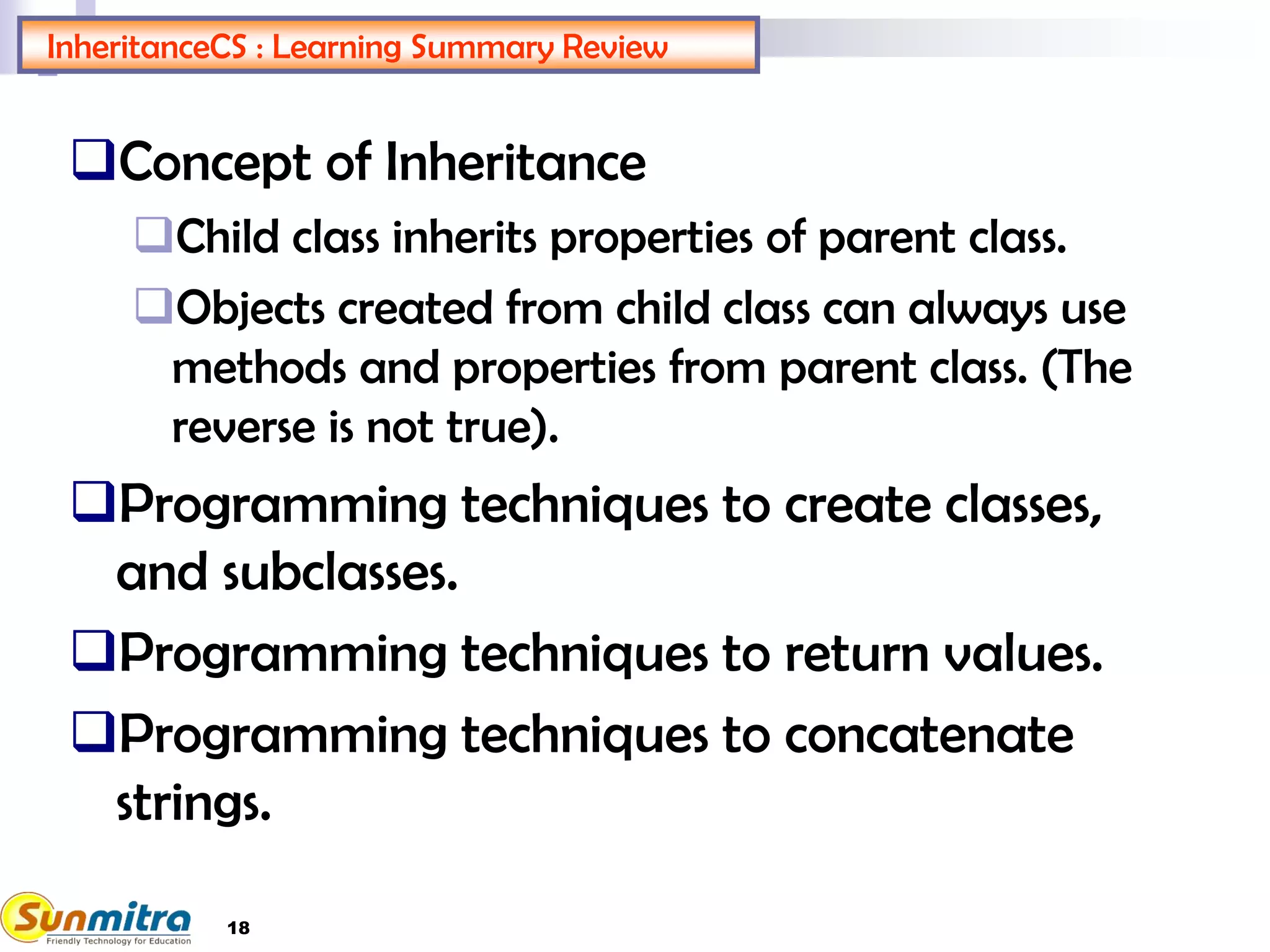This document provides guidance on using inheritance in C# and ASP.NET. It includes an example to demonstrate inheritance by creating Parent and Child classes, with the Child class inheriting from the Parent class. The example shows calling a method from the Parent class using an object of the Child class. The document also includes exercises for learners to practice inheritance by creating Polygon and Square classes, with Square inheriting from Polygon. Learners are asked to display a string showing the number of sides for different polygon types.


